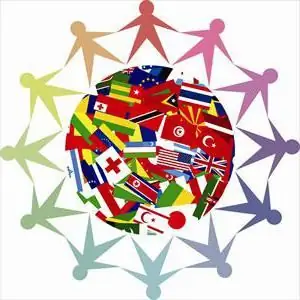- Author Henry Conors [email protected].
- Public 2024-02-12 02:47.
- Last modified 2025-01-23 09:07.
Approximately more than five hundred years ago, China was the world's economic leader and, according to economists' forecasts, by 2030 it will again come out on top. In the last decade, the share of developing countries in world GDP has been constantly increasing. The main contribution to the change in proportions is made by the BRICS countries, for the most part China, India and Brazil.
Economy in ancient times
In ancient times, the state of the economy largely correlated with the size of the population living in the country. Based on available data on the number of inhabitants, British scientist Angus Maddison, specializing in macroeconomic history, and Michael Sembalest, an expert at investment bank JP Morgan, have estimated the share of countries in world GDP since ancient times.

At the beginning of our era, the two most populous countries in the world, India and China, accounted for, respectively, a third and a quarter of the inhabitants of the Earth, in the same proportion and was their contribution to the world economy. Since about 1500, China has become the firstplace in the world in terms of the country's share in world GDP. The economies of the territories in which Russia and the leading European countries subsequently formed had a GDP of approximately the same order. In 1500, Russia's GDP amounted to $8,458 million, Germany - $8,256 million (estimated in international Geary-Khamis dollars at the rate of 1990), China's leading economy - $61,800 million.
Changing trends
After the first industrial revolution of the 18th-19th centuries, the level of GDP produced ceased to depend on the number of employees and began to be primarily determined by the development of technology.
As a result of the technical re-equipment of industry in the United States, starting from the 1850s, the country's share in world GDP began to increase rapidly and continued to grow until about the 1950s. And since that period, little has changed. Japan's economy, which before the First World War lagged even behind the countries of Eastern Europe, began to grow from the 60s of the last century as a result of the technological revolution. Now it is the third country in the world in terms of GDP. Due to technological backwardness, the shares of the economies of India and China have been declining for a long time and have begun to grow only in the last 50 years. The shares of Great Britain, France and Germany have been constantly decreasing throughout the 20th century.
The structure of the world economy in 2017

The undoubted leadership of the United States in terms of the share of countries in world GDP has long been indisputable and weighty. The country accounts for approximately a quarter of the global economy (24.3%), which in monetary termsis about $18 trillion. The US economy is larger than the combined economies of countries ranked 3rd to 10th in terms of GDP. In the 21st century, the country is home to 5% of the world's population and produces a quarter of the world's GDP, while the Asian continent (excluding Japan) accounts for 60% of the population and only a third of GDP.
In second place in terms of the country's share in world GDP is China, which is gradually pushing the United States in all major macroeconomic indicators. And according to all forecasts, it will overtake in the coming decades, which is precisely shown by the dynamics of the country's development and the forecasts of the world's leading experts. The country has a GDP of $11 trillion with a share of 14.8%. In third place is the European Union with approximately the same indicators. If we take only countries, then China is followed by Japan with $4.4 trillion of GDP and a 6% share. Russia is in 12th place with a share of 1.8%, which is constantly decreasing, in 2013 the country accounted for 3%.
Long-term forecasts

According to some forecasts, thanks to the fourth industrial revolution, by 2050, global GDP will approximately double. China will come out on top with a 20% share, followed by India and the US.
The share of developing countries in world GDP will be 50%, and perhaps their economies will take 6 out of 7 first places. At the same time, Indonesia will reach fourth position, and Mexico will overtake Great Britain and Germany.






